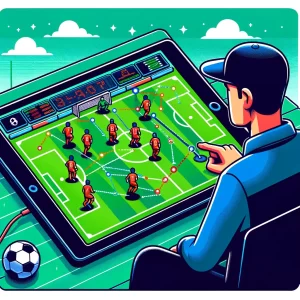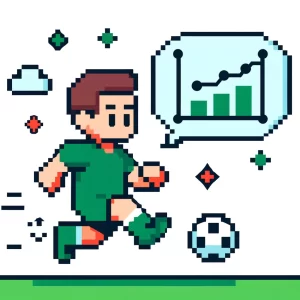
How Soccer Analytics Are Changing Coaching Forever
Picture this: your team’s winger sprints into open space, but the ball never comes. Parents in the stands groan. Coaches shake their heads. But what if, instead of guesswork, you had proof—real numbers showing which players actually create space, when pressing breaks down, and how your formation shapes control of the field?
That’s the promise of modern soccer analytics. For decades, the game has been called “the beautiful game” precisely because of its chaos—its improvisation, its flow, its refusal to be reduced to stats. Yet, as Luke Bornn and colleagues write in Significance, beauty hides patterns. And those patterns are finally being captured through player-tracking data that reveals what truly wins matches: what players do when they don’t have the ball.
The 87-Minute Secret
Johan Cruyff once said players have the ball for about three minutes per match. The other 87 minutes define who wins. Traditional stats—passes, shots, goals—miss most of the story. The real game happens in the invisible spaces: defensive shape, off-ball movement, and spatial control.

Early analytics focused on surface-level insights—possession ratios, home advantage, long-ball tactics. But the revolution came when teams began tracking every player’s movement across the pitch. Instead of studying only who had the ball, analysts began asking: Who owns the space?
The Science of Space
This shift gave rise to pitch control models, a family of tools that map which player (or team) “controls” every patch of the field at any moment. The simplest model—called a Voronoi diagram—divides the field into zones based on who’s closest. But that’s like freezing a match into a chessboard: useful, but static.
Smarter models now add movement, velocity, and reaction time. These physics-based models estimate the probability that a player could reach the ball first. When coaches overlay this with game footage, they can see exactly how space is created, compressed, or left exposed.
In one striking analysis of Spanish La Liga matches, defenders’ positions shifted dramatically depending on ball location. A simple takeaway: elite defenders aren’t chasing the ball—they’re controlling the zones that matter most.
What Coaches Can Do Now
You don’t need a FIFA-level analytics team to start using these insights. The logic behind pitch control and movement data can reshape how any coach trains players to “read the game.” Here’s how:
- Coach Off-Ball Awareness. Most youth players think being “involved” means touching the ball. Build drills that reward smart positioning instead. For example, run small-sided games where points are earned for moving into open space before receiving a pass.
- Use Video for Spatial Reflection. Even phone footage works. Pause play and ask: Who has the most control over the next pass? Over time, players learn to anticipate openings rather than react to them.
- Design “Overload and Exploit” Sessions. An overload draws defenders to one side of the pitch, creating space on the other. Train players to recognize this cue and switch play quickly. It’s the human version of what analytics models show in numbers.
- Reframe Defensive Training. Instead of chasing attackers, teach defenders to “own” dangerous areas. Visualize control zones on the field with cones or lines to make the space visible.
- Track Effort Intelligently. GPS vests and smartphone tracking apps now make basic data collection affordable. You don’t need 3D models—just consistent feedback on movement and positioning to see improvement.
Why It Matters for Every Club
The biggest lesson from the research isn’t about moneyballing your way to trophies—it’s about understanding soccer’s geometry. Small clubs can use a data-informed strategy to compete with giants. Leicester City’s 2016 Premier League title wasn’t a fluke; it was the result of disciplined spacing, counterattack precision, and tactical adaptation—exactly what analytics helps reveal.
At the professional level, teams now have real-time player-tracking during major tournaments. But for local clubs and academies, the real victory is cultural: moving from “we played hard” to “we controlled the game.”
Analytics isn’t about replacing intuition—it’s about sharpening it. The data confirms what great coaches already sense: soccer is about connection, timing, and shared intelligence. When you make the invisible visible, players learn not just where to be, but why.
Your Turn to Kick It Off
How do you teach players to move when they don’t have the ball?
Could your club benefit from simple spatial metrics to track growth over a season?
And what new roles could data play in making the game more inclusive, smarter, and safer for everyone?
Drop your thoughts below—and keep an eye on the data. The next great coach might not just read the game. They might analyze it.



